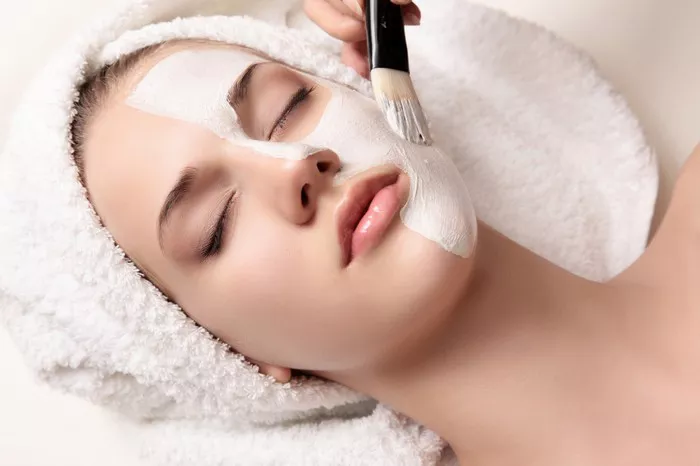Everyone’s skin is unique, and finding the best skincare routine for your specific needs is essential for achieving and maintaining healthy, radiant skin. With the wide range of skincare products and advice available, it can be overwhelming to figure out what will work best for you. The key to an effective skincare routine is understanding your skin type, concerns, and goals, and selecting the right products that cater to those needs.
The right skincare routine should focus on cleansing, protecting, treating, and moisturizing your skin, and it should be customized based on your skin type and any specific issues you’re dealing with, such as acne, dryness, or signs of aging.
In this article, we will guide you through the essential steps of a skincare routine, help you identify the best products for your skin type, and share tips for creating a personalized skincare routine. By the end, you’ll have a better understanding of how to craft a skincare regimen that works for you.
Step 1: Understanding Your Skin Type
Before you can choose the right products, it’s crucial to know your skin type. Your skin type will determine which products will be most effective for you. Here are the five most common skin types:
- Normal Skin:
- Characteristics: Balanced, neither too oily nor too dry, with small pores and no significant blemishes.
- Needs: A simple, gentle routine to maintain the balance of hydration and oil.
- Oily Skin:
- Characteristics: Shiny, especially in the T-zone (forehead, nose, chin), enlarged pores, and prone to acne or blackheads.
- Needs: Oil-free or mattifying products to control excess oil and prevent clogged pores.
- Dry Skin:
- Characteristics: Tight, rough, flaky, or dull-looking skin, with potential for redness or irritation.
- Needs: Moisturizing and hydrating products to restore moisture and protect the skin’s natural barrier.
- Combination Skin:
- Characteristics: Oily in the T-zone and dry or normal on the cheeks and other areas.
- Needs: A combination of products that balance oil control for the T-zone and hydration for the drier areas.
- Sensitive Skin:
- Characteristics: Easily irritated, red, prone to inflammation, and reacts negatively to many skincare products.
- Needs: Gentle, soothing products with minimal ingredients to avoid irritation.
Understanding your skin type is the first step toward selecting the right skincare products for your routine.
Step 2: Cleanse Your Skin
Cleansing is the most basic and essential step in any skincare routine. Cleansing removes dirt, oil, makeup, and impurities from your skin, ensuring that it is clean and ready for the next steps in your routine.
Choosing the Right Cleanser:
- For Oily Skin: Opt for a foaming or gel-based cleanser that helps remove excess oil and prevent clogged pores. Look for products with salicylic acid or benzoyl peroxide to target acne.
- For Dry Skin: Choose a hydrating, cream-based cleanser that doesn’t strip the skin of natural oils. Look for products with moisturizing ingredients like glycerin or ceramides.
- For Combination Skin: A gentle, balanced cleanser that can address both oily and dry areas will work best. A mild gel or cream cleanser should work well.
- For Sensitive Skin: Choose a fragrance-free, hypoallergenic, and mild cleanser that won’t irritate the skin. Gel or cream cleansers with calming ingredients like aloe vera or chamomile are good choices.
How to Cleanse:
- Use lukewarm water to wet your face.
- Apply a small amount of your cleanser and gently massage it into your skin in circular motions.
- Rinse thoroughly with lukewarm water.
- Pat your face dry with a clean towel, avoiding rubbing.
Cleansing should be done twice a day—once in the morning to remove any sweat or oils that accumulate overnight, and once at night to cleanse away dirt, oil, and makeup from the day.
Step 3: Exfoliate Your Skin (2-3 Times a Week)
Exfoliation helps remove dead skin cells from the surface of your skin, promoting a smoother texture and brighter complexion. It also allows other products to penetrate better and work more effectively.
Types of Exfoliants:
- Physical Exfoliants: These contain small, gritty particles (like sugar or salt) that manually scrub away dead skin. These can be too abrasive for sensitive or dry skin, so use them sparingly.
- Chemical Exfoliants: These use acids like alpha-hydroxy acids (AHAs) and beta-hydroxy acids (BHAs) to dissolve dead skin cells. AHAs are great for dry or sensitive skin, while BHAs (like salicylic acid) are ideal for oily or acne-prone skin.
How to Exfoliate:
- Apply a gentle exfoliant to damp skin.
- Massage it gently in circular motions (if using a physical scrub) or leave it on for the recommended amount of time (if using a chemical exfoliant).
- Rinse off with lukewarm water.
- Follow up with a moisturizer to lock in hydration.
Avoid over-exfoliating, as this can damage the skin barrier and cause irritation. Stick to exfoliating 2-3 times a week, depending on your skin’s needs.
Step 4: Tone Your Skin (Optional)
Toning is often an optional step, but it can help balance your skin’s pH levels and prepare it for moisturizing. Toners can remove any remaining traces of dirt or cleanser and may provide additional skincare benefits like hydration or acne treatment.
Choosing the Right Toner:
- For Oily Skin: Look for a toner with astringent properties, such as witch hazel or salicylic acid, to control oil production.
- For Dry Skin: Opt for a hydrating toner with ingredients like glycerin or hyaluronic acid to replenish moisture.
- For Sensitive Skin: Choose a soothing toner with calming ingredients like chamomile or aloe vera, and avoid alcohol-based formulas, which can irritate the skin.
How to Tone:
- Apply the toner to a cotton pad and swipe it gently across your face, avoiding the eye area.
- Allow the toner to absorb into your skin before applying your next product.
Step 5: Apply Treatment Products (Serums, Spot Treatments)
Treatment products, such as serums and spot treatments, are formulated to address specific skin concerns. Whether you’re targeting acne, fine lines, dark spots, or dryness, this step is designed to deliver concentrated ingredients that treat those issues.
Popular Treatment Products:
- For Acne: Choose a serum or treatment with salicylic acid or benzoyl peroxide.
- For Hyperpigmentation: Look for a serum with vitamin C, niacinamide, or alpha arbutin to brighten dark spots and even skin tone.
- For Anti-Aging: Retinol, peptides, and antioxidants like vitamin C and E help reduce the appearance of fine lines and improve skin elasticity.
How to Apply Treatment Products:
- Apply your serum or treatment after toning but before moisturizing.
- Use a few drops and gently press or pat the product into your skin, focusing on the areas of concern.
- Follow the instructions on the product to ensure you’re using it at the correct time (e.g., some treatments work best at night, while others can be used in the morning).
Step 6: Moisturize Your Skin
Moisturizing is essential for all skin types, even oily skin. Moisturizers help maintain hydration, prevent dryness, and lock in the benefits of previous products. The key is to choose a moisturizer that suits your skin type.
Choosing the Right Moisturizer:
- For Oily Skin: Choose a lightweight, oil-free moisturizer or a gel-based moisturizer that hydrates without clogging pores.
- For Dry Skin: Opt for a richer, cream-based moisturizer with hydrating ingredients like ceramides, hyaluronic acid, or shea butter.
- For Combination Skin: A balanced, non-greasy moisturizer that hydrates without adding extra oil is ideal.
- For Sensitive Skin: Look for a fragrance-free moisturizer with calming ingredients, such as aloe vera or chamomile.
How to Moisturize:
- Apply your moisturizer to your face and neck.
- Gently massage the product in using upward, circular motions.
- Be sure to apply moisturizer to damp skin for maximum hydration.
Step 7: Apply Sunscreen (Morning Routine)
Sunscreen is the most important step in any skincare routine. It helps protect your skin from harmful UV rays, which can cause premature aging, sunburn, and even skin cancer. Make sure to use a broad-spectrum sunscreen with at least SPF 30 every day, even on cloudy days or when staying indoors.
Choosing the Right Sunscreen:
- For Oily Skin: Opt for a mattifying, oil-free sunscreen with a lightweight formula.
- For Dry Skin: Look for a hydrating sunscreen with added moisturizers, such as glycerin or hyaluronic acid.
- For Sensitive Skin: Choose a sunscreen with physical blockers like zinc oxide or titanium dioxide, which are less likely to irritate sensitive skin.
How to Apply Sunscreen:
- Apply sunscreen as the final step in your morning routine, after moisturizing.
- Use enough sunscreen to cover your entire face, neck, and ears (about a nickel-sized amount).
- Reapply every two hours if you’re outdoors, and after swimming or sweating.
Step 8: Night Care (Optional)
At night, your skin goes into repair mode. Adding a richer night cream or treatment can help enhance this process. Look for products with retinol, peptides, or other active ingredients that promote skin regeneration overnight.
Night Care Tips:
- Use a richer moisturizer or a night mask if you have dry skin.
- Consider using a retinol product if you are concerned about fine lines or acne.
- Avoid using harsh exfoliants or active treatments on the same night to prevent irritation.
Conclusion
Creating the best skincare routine for your skin requires understanding your unique skin type, needs, and goals. A good skincare routine should be simple, consistent, and customized to suit your lifestyle. By following the steps outlined above, including cleansing, exfoliating, treating, moisturizing, and protecting your skin, you can achieve healthier, more radiant skin. Remember, consistency is key, and it may take time to see results. Stick to your routine, and be patient as your skin adjusts to the care you’re giving it.
Related Topics



































